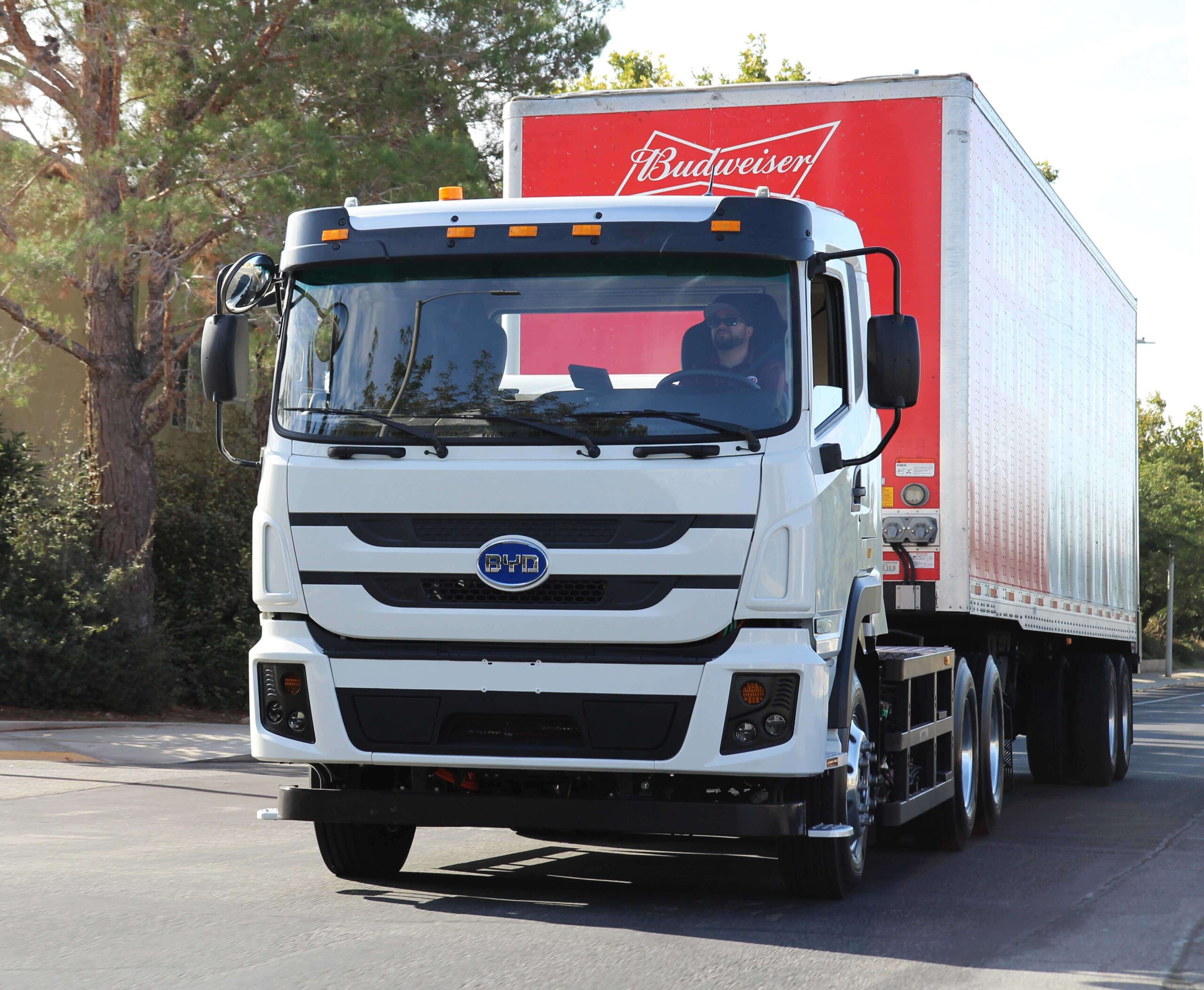California's efforts to clean its air by reducing emissions in its freight sector reached three milestones in the last week. First, the California Air Resources Board (ARB) passed a motion to phase out its medium-and heavy-duty diesel trucking fleet at its ports and rail yards by 2035 and announced it was considering a separate motion that could be considered this spring that would phase out diesel trucks entirely by 2042. Last week, the California Public Utilities Commission (CPUC) adopted a five-year, $1 billion transportation electrification program for utility transportation electrification efforts.
The timeline adopted by ARB to phase out the use of diesel trucks at its port is aggressive. Starting in 2024, all new box trucks, delivery vans, and freight trucks licensed in California must be zero-emission vehicles. The following year would begin a gradual phase-out of all diesel-powered trucks at ports, rail yards, and warehouses across the state until the use of diesel trucks at the ports is eliminated by 2035.
This may seem a tall order. Today, roughly 500 of the 1.8 million heavy-duty trucks operating in California are zero emissions. Representatives of the freight industry note that while the state has 80,000 vehicle charging stations, most of them aren't large enough to handle larger freight vehicles. State officials estimate it will need 157,000 chargers installed in the state by 2030 to support the electrification of its medium-and-heavy-duty vehicle fleet.
However, the potential benefits to the state are huge. In 2020, off-road diesel fuel in trucks accounted for roughly 14 percent of total nitrous oxide emissions in CA. The state estimates the rule will yield $5.7 billion in public health benefits and prevent more than 570 air-quality-related deaths.
ARB is considering an even more ambitious plan to phase out diesel trucks entirely by 2042. Known as the Advanced Clean Fleets rule, some officials are hoping to get a hearing this spring. The ban would go quite a bit farther than the ban on diesel vehicles operating at the ports as it would affect everything from long-haul freight trucks to garbage trucks used by small municipalities.
As with the port ban, how one feels about the proposed rule depends on whether or not one is looking at the benefit or looking at the cost and challenges.
"There are millions of Californians that are living at the front line of diesel pollution,” said Andrea Vidaurre, senior policy analyst for the San Bernardino County-based People’s Collective for Environmental Justice at an October hearing on the rule.
"People have shortened lives because of the environment that they live in,” she said. “Kids’ lungs aren’t growing at the same speed because of where they live...If the technology exists, there’s no reason why we should still be suffering (and) breathing in that air pollution.”
While the People's Collective supports the rule, they wish it could be implemented even sooner, in 2036.
But not everyone is so excited by the rule. “The main issue is that, with the technology that we have today and the variety of applications, the regulation just simply is not feasible to implement for the vast majority of trucking operations,” said Chris Shimoda to the Orange County Register, senior vice president, government affairs, for the California Trucking Association.
But California is showing willingness to invest in clean technologies. Earlier this month, CPUC announced a $1 billion vehicle electrification charging project.
Most of the money is earmarked to accelerate the number of midsize-and-heavy-duty trucks on the state’s roads. 70 percent of the funds will go towards charging for medium-and-heavy-duty vehicles, which are responsible for a disproportionate share of greenhouse gas (GHG) emissions and other air pollutants from the transportation sector, and 30 percent will go towards light-duty charging at or near multi-unit dwellings.
Governor Gavin Newsom celebrated the news. "California is leading the world in the zero-emission vehicle revolution, and this $1 billion investment will continue building out the state’s charging infrastructure to make the transition to electric vehicles easier than ever," he said in a statement. Newsom also noted that the $1 billion isn't a one-time allocation, but part of a larger investment in replacing and modernizing the state's fleet.
“This complements the $10 billion package we enacted to build out the infrastructure and make it more affordable for Californians to make their own transition to electric vehicles, part of our overall $54 billion California Climate Commitment. These collective efforts are exactly how we will make our zero-emission transportation future a reality, cutting pollution and driving economic opportunity for Californians.”






